We took a day trip from Nukus to Muynak (Moynaq).
Muynak was once a fishing town on the Aral Sea coast. The Aral Sea used to be an oasis in the desert, but it has been greatly reduced by large-scale irrigation for cotton cultivation.
The lake shoreline has receded so rapidly that fishing boats have been left behind on the sandy shores, which have become a ‘ship cemetery’.
We took a day trip from Nukus to visit the disaster town, Muynak.
- Getting from Nukus to Muynak
- Luckily, we jumped on a tour vehicle to Muynak
- Departure from Nukus guesthouse: 8am
- Visit to the ship cemetery and museum: 11am
- Aral Sea: One of the largest natural disasters of the 20th century
- Shared taxi from Muynak to Kungirot: 1:30 pm
- Shared taxi departure from Kungirot to Nukus: 3:10pm
- Arrival at Nukus
Getting from Nukus to Muynak
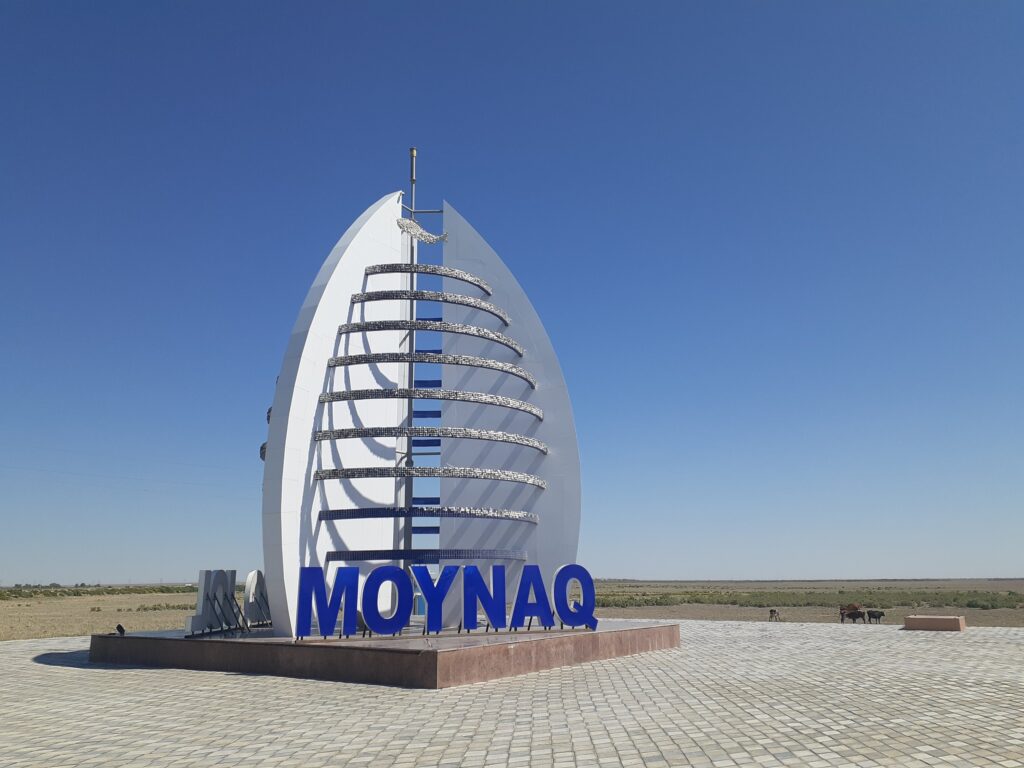
Nukus to Muynak is approximately 200 km away. Public transport between the two is by bus, shared taxis or plane. However, flights are less convenient, as there is only one flight per week. It’s very cheap though!
Bus from Nukus to Muynak

We believe that buses to Muynak leave from the bus terminal in Nukus every morning at around 9am, but times may vary. Buses from Muynak to Nukus leave at around 3pm, so be careful not to miss this if you are making a day trip. The bus fare from Nukus to Muynak costs 25,000 som per person. The journey takes approximately 3-4 hours.
Shared taxis from Nukus to Muynak
Shared taxis leave as soon as there are enough passengers. We were told to they leave from near the bus terminal. There is also a shared taxi stand in front of Nukus Railway Station, where you may be able to catch a taxi to Muynak.
Shared taxis are slightly faster than buses, take about three hours and cost 50,000 som per person.
Charter a car
Another option for Muynak day trips from Nukus is to charter a car. Guesthouses in Nukus should be able to arrange this for you, so ask them.
Luckily, we jumped on a tour vehicle to Muynak

Although we were not sure of the departure time, we decided to go to the bus station anyway and asked at the guesthouse about a taxi to the bus station that morning. The bus terminal is about 5 km away. The staff at the guesthouse arranged a car for us, not through Yandex, but through a car dispatch app commonly used in the area.
And then a Spanish couple staying in the room opposite came down with their suitcases. Apparently they were going on an overnight tour after checking out.
We overheard as the reception staff explained them about their plans for the day. They were going to Muynak first on their tour. I said, “Are you going to Muynak? Well, we are also planning to go today…”, and they kindly agreed to share a ride with us to Muynak. We were lucky and paid them the bus fare for the ride. Luxury!
Departure from Nukus guesthouse: 8am
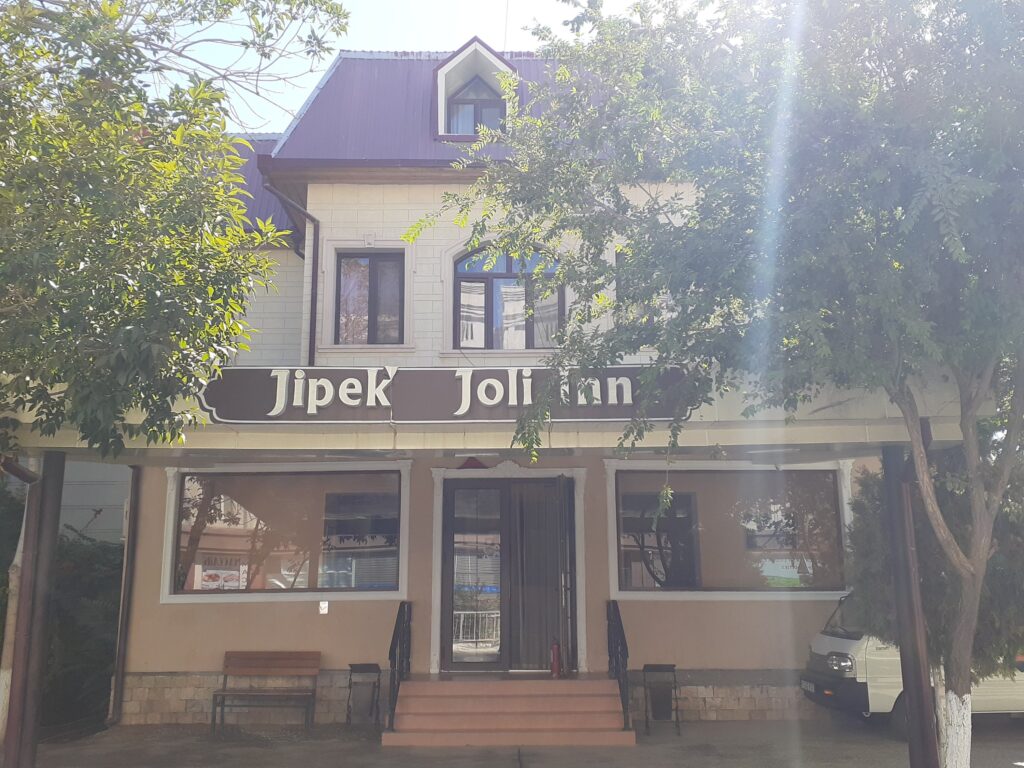
The car was a Toyota four-wheel drive and the driver spoke Russian and Uzbek, although he did not speak English.
We left in front of the guesthouse shortly after 8am. The car was air conditioned very comfortable.
The road from Nukus to Muynak was paved with asphalt, but some parts were in really bad condition with big holes in places. We finally arrived at the Ship Cemetery Museum in Muynak at 11am, which means it took us three hours.
Visit to the ship cemetery and museum: 11am
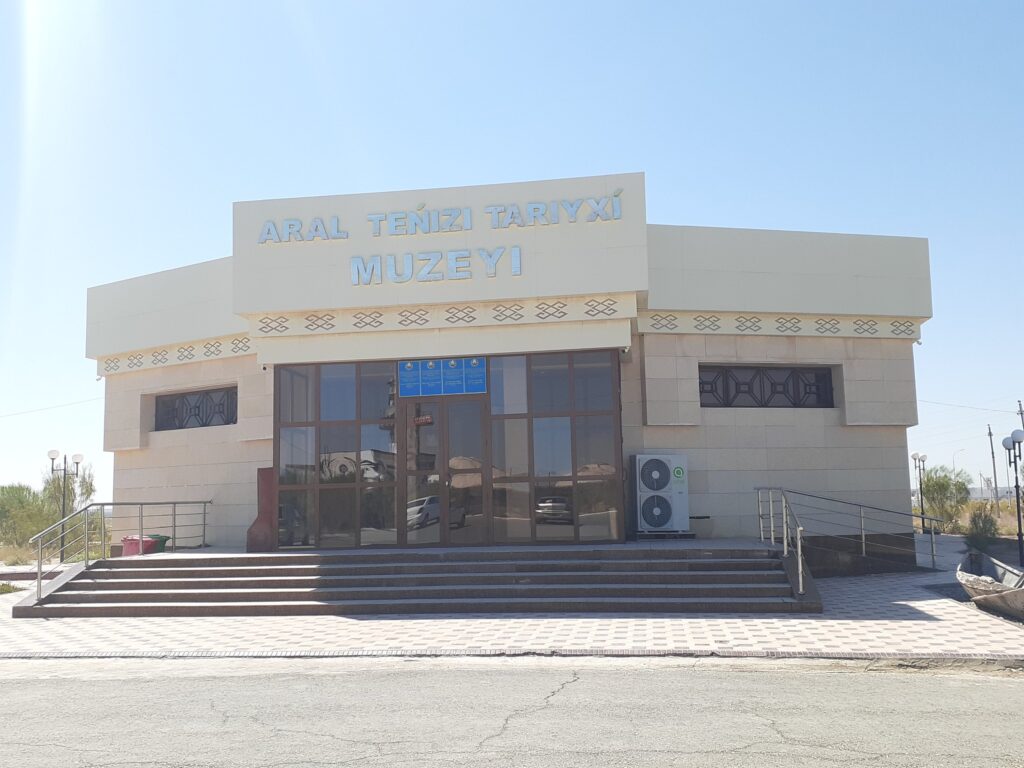
A museum has been built near the ship cemetery where the ships were left behind, and it’s displaying related materials. The entrance fee was 30,000 som per person for foreigners.
Outside the museum there is a monument and you can go down to the ship cemetery in what was once the Aral Sea. We took photos of the monument and its surroundings before entering the museum and watching the exhibits and videos inside. We then went down to the ship cemetery.

The monument and the ship cemetery are outside and can be visited without entering the museum. No entrance fee is required. However, it is more meaningful to visit the museum to gain a better understanding of the history and background of the Aral Sea reduction and then visit the ship cemetery.
Aral Sea: One of the largest natural disasters of the 20th century

The Aral Sea was once a large lake of more than 60,000 square kilometres. It was a salt lake straddling Uzbekistan and Kazakhstan and an oasis in the desert. Several fishing villages were formed on its shores. However, the ‘nature restoration programme’ of the Soviet Union, especially after 1940, led to a drastic reduction in the size of the lake, which shrank to a fifth of its original size in just half a century.
A major cause of this was irrigation for cotton cultivation. Cotton cultivation is known to have been already practised in this area since around the 18th century, but Imperial Russia, which entered the area in the 19th century, was in the midst of an industrial revolution and needed large quantities of cotton. They settled nomads to cultivate farmland and irrigated rivers flowing into the Aral Sea to promote cotton farming.
The destruction of nature is said to have been driven by the fact that the Aral Sea, a salt lake, was neglected because of its low value as a source of water for agriculture, and by the belief that it was wonderful to surpass nature through evolved human beings and science.
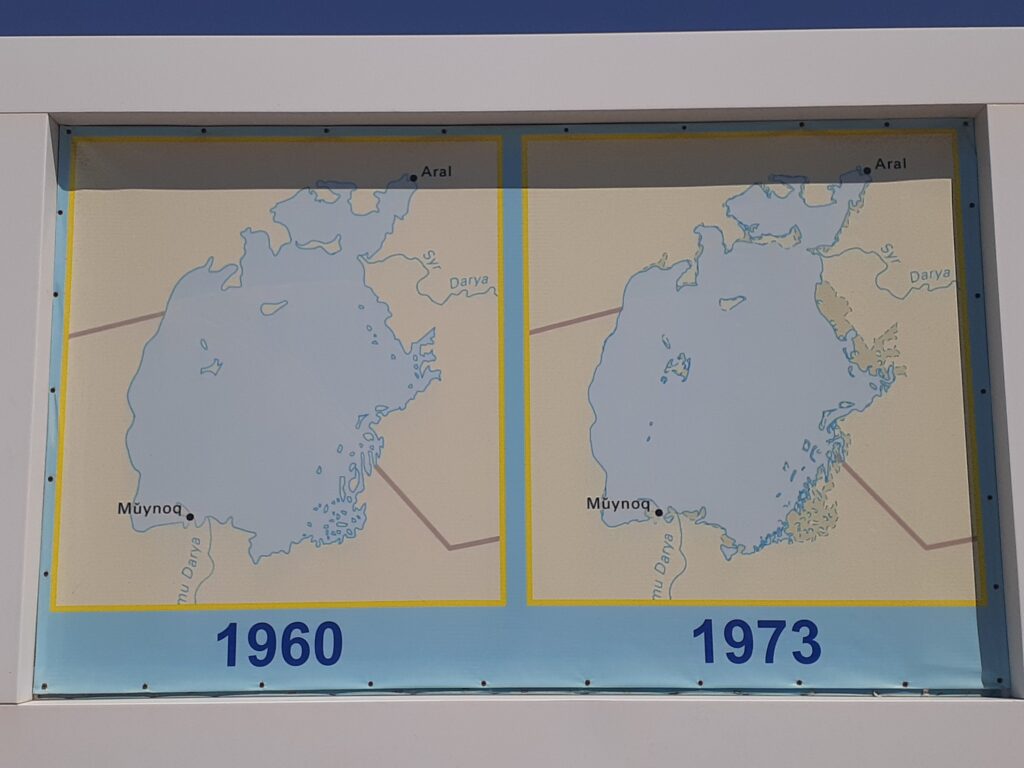

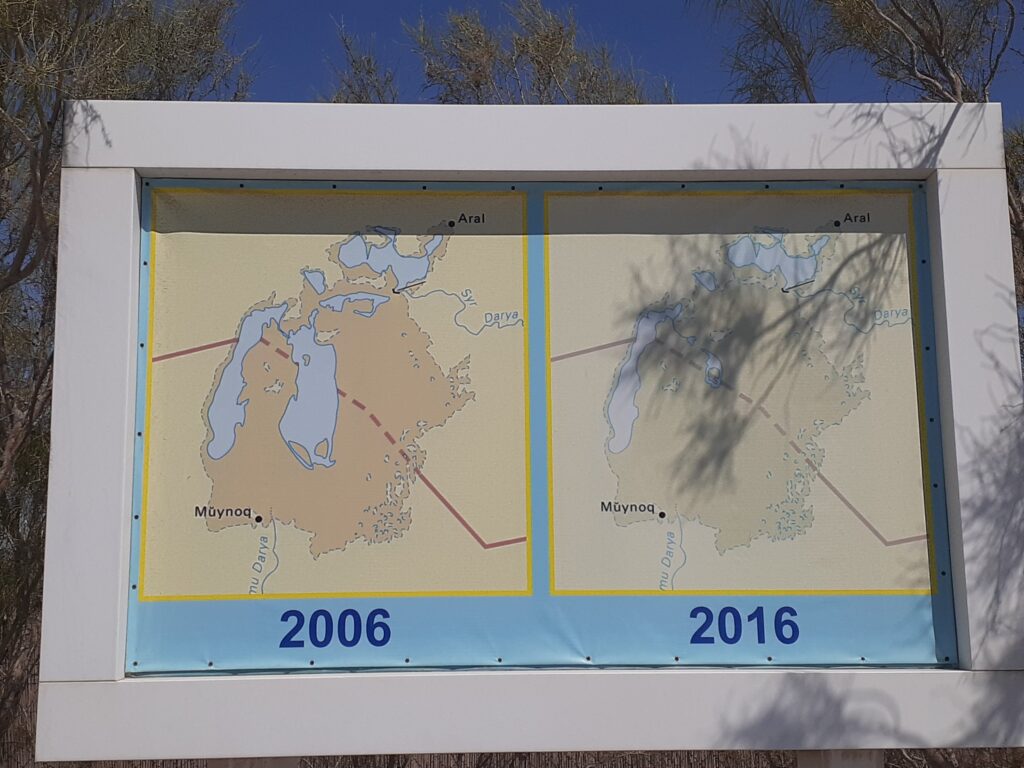
The lake, once rich in fisheries and holding a diverse ecosystem, gradually lost its water volume. The water level dropped and the shoreline receded. 1960 saw a marked reduction, with the shoreline sometimes receding by tens of metres overnight. This left several fishing boats stranded and turned the lake into the graveyard of boats that it is today.
The ecology of the area has also changed dramatically as the Aral Sea has shrunk and desertified. The waters of the Aral Sea, whose volume has been greatly reduced, have become saltier than seawater, making fishing unviable, and the surrounding fishing villages have been abandoned.

Today the Aral Sea remains as several smaller lakes. The Aral Sea is said to be the largest environmental disaster of the 20th century.
Shared taxi from Muynak to Kungirot: 1:30 pm

After visiting the museum and the ship cemetery, we returned to the town of Nukus.
When we went to the shared taxi rank near Muynak Airport (buses to Nukus also seem to leave from here), we found a car that would take us to Kungirot, a town on the way to Nukus, and decided to take it to Kungirot for now. It cost 25,000 som per person for a passenger car with four passengers.
Shared taxi departure from Kungirot to Nukus: 3:10pm

The shared ride taxi from Monaic arrived in Kunguirot at 3pm. The vehicle stopped at the main road junction and we were told that the Nukus-bound vehicle would be leaving from an area a short distance away.
We bought some bread from a small shop on the side of the road and headed over. We told the driver we were going to Nukus and waited a little while for other passengers to gather. The town of Kungirot is bigger than Muynak and has more cars and people, but foreigners are probably rare. Various people spoke to us while we were waiting.
Within 10 minutes, two other passengers arrived and we had left. The time was just after 3pm.
Arrival at Nukus
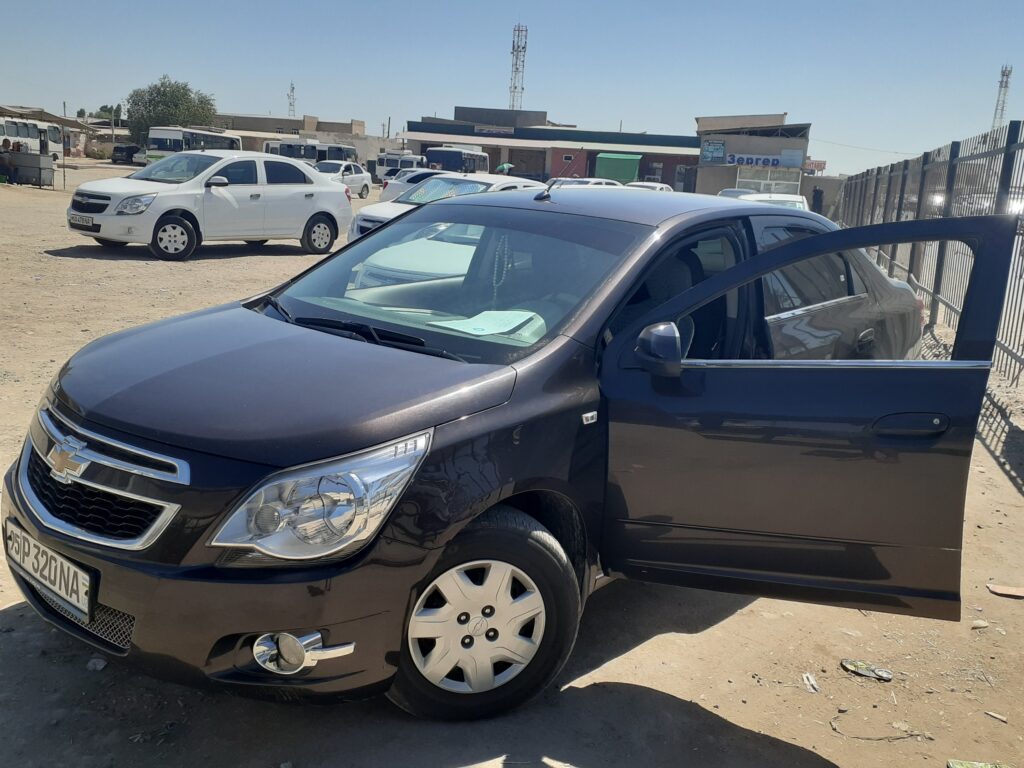
We arrived in Nukus a little after 4.30pm. The fare was 35,000 som per person. We were dropped off near the guesthouse where we were staying and walked back from there.
It was a long day trip with a lot of travel time, but it was well worth the visit. If you come to Nukus, you should definitely visit the boat cemetery at Muynak.



Comment